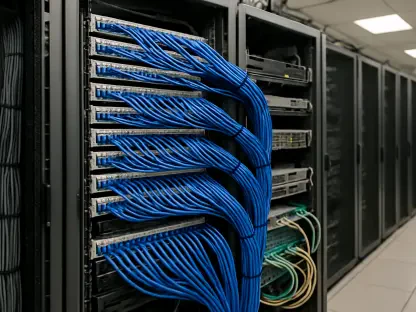In the current digital landscape, organizations face increasingly complex and persistent cyber threats that demand proactive and intelligent security measures. As cybercriminals continue to refine their tactics, the potential for damage from cyber attacks has never been higher. This evolving threat environment has placed immense pressure on companies to adopt preemptive strategies in their cybersecurity frameworks. Threat intelligence has emerged as a pivotal tool, offering the ability to predict and prioritize cyber attacks, allowing organizations to deflect potential breaches before they can inflict harm. This article delves into the intricacies of leveraging threat intelligence to identify budding threats early on, ultimately fortifying organizational defenses and optimizing resource allocation.
Leveraging Data-Driven Insights for Predictive Security
Threat intelligence utilizes data-driven insights to anticipate potential cyber threats by collecting and analyzing vast amounts of information from a multitude of sources. This approach enables security teams to stay ahead of emerging threats by identifying patterns and indicators of compromise. Machine learning and artificial intelligence play a crucial role in processing this data, transforming raw threat data into actionable intelligence that can predict vulnerabilities. The predictive capabilities of threat intelligence allow organizations to prioritize potential risks, enabling them to focus on those threats most likely to impact their operations. By continuously refining their models and learning from historical data, organizations can anticipate future attacks more accurately, addressing weaknesses before they can be fully exploited. This foresight is instrumental in maintaining robust cybersecurity measures that can adapt to the ever-changing threat landscape.
Integrating and Sharing Threat Intelligence for Enhanced Cybersecurity
Integrating threat intelligence into current cybersecurity frameworks is crucial for crafting strong defenses against cyber threats. By aligning threat intelligence with traditional security systems, organizations build a more robust and adaptable security framework. Sharing intelligence across different industries boosts these efforts, fostering a cooperative defense that uses shared knowledge to fight cyber threats. Cross-industry collaboration promotes the spread of essential threat information, enabling organizations to learn from one another’s experiences. This collective defense strategy ensures that organizations not only address immediate threats but also prepare for possible, more severe vulnerabilities. Streamlining the threat intelligence process removes redundant data, focusing on the most important threats and ensuring efficient resource use. As cyber threats become more complex, smoothly integrating and exchanging threat intelligence becomes a crucial element of a comprehensive cybersecurity strategy. Utilizing threat intelligence strengthens defense strategies, enabling them to anticipate, adapt, and efficiently prioritize high-risk threats.









